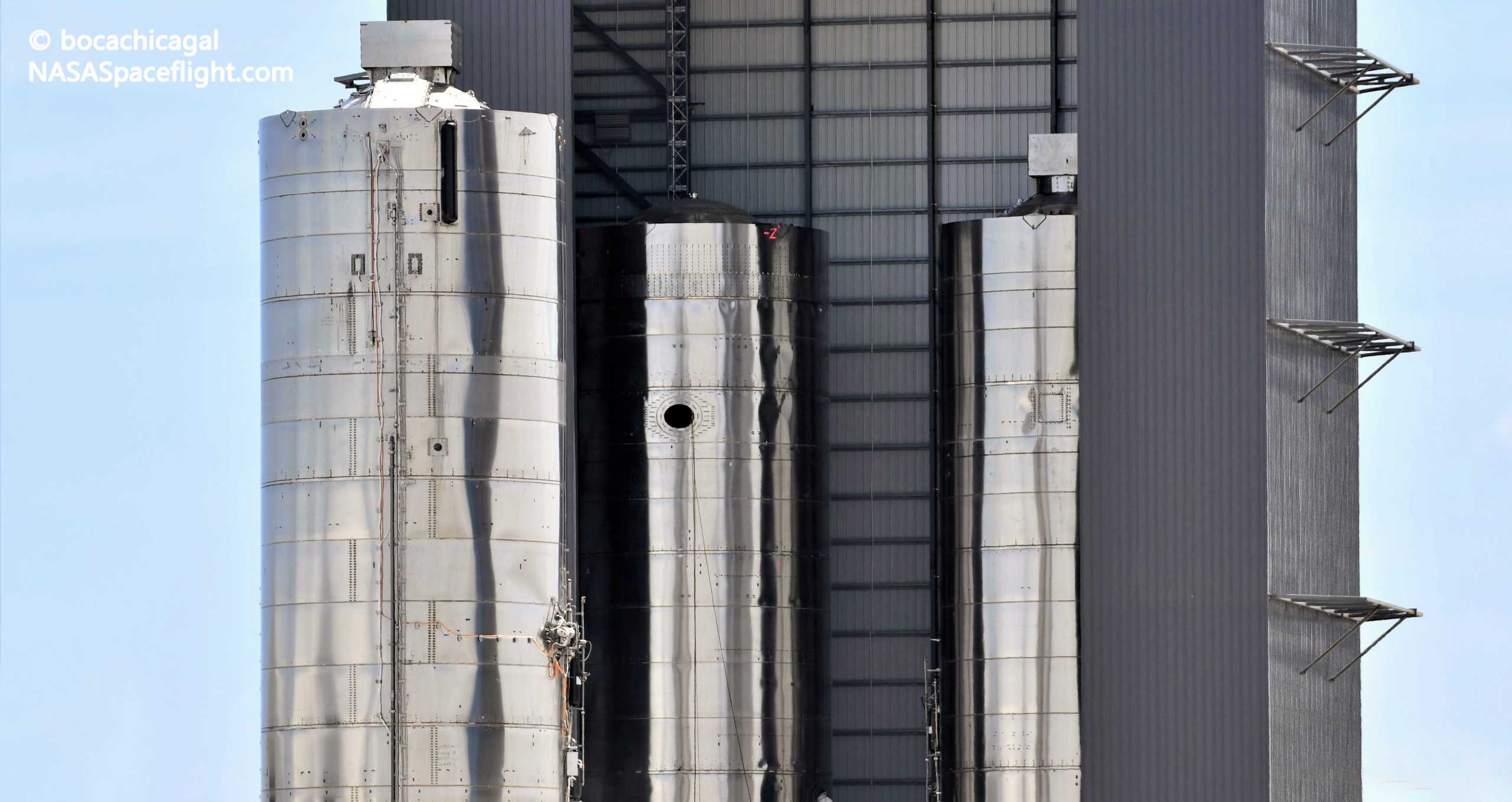
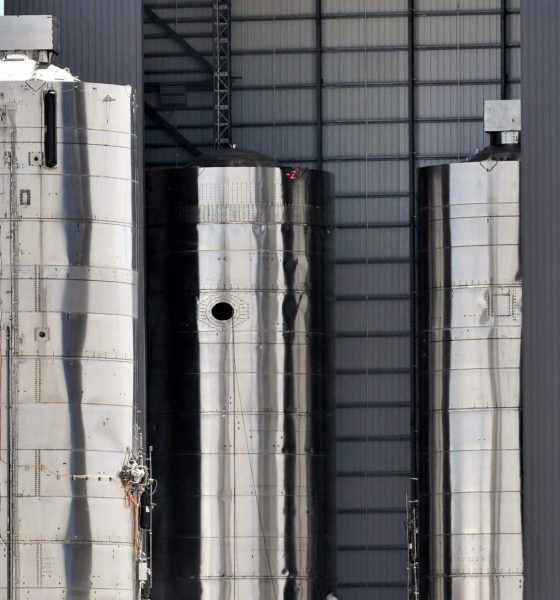
News
SpaceX Starship factory overflowing with new and flight-proven rockets
After a relatively relaxed period of production and testing, SpaceX’s South Texas Starship factory is practically overflowing with new and flight-proven ships as the company prepares for the rocket’s next major tests.
Even before the one-off Starship Mk1 prototype failed a pressure test late last year, SpaceX was in the process of upgrading its Boca Chica production facilities and refining the ship’s design and manufacturing processes. Starship SN1, the first prototype built as part of that upgrade, rolled to the launch pad on February 25th, 2020, followed by Starship SN2 (turned into a test tank) just a week or so later. Starship SN3 and SN4 would both follow in early and late April, ultimately ending with the latter prototype’s spectacularly violent demise in late May.
Over the remaining three or so months, the pace of testing has slowed a bit as SpaceX’s Starship development program enters the full-scale flight testing phase. Starship SN5 began testing on July 1st, followed by SN6 around six weeks later. Both prototypes successfully hopped just 30 days apart. Now, although SpaceX still plans to hop SN5 a second time and may hop SN6 twice, too, the Starship program’s focus has shifted to high-altitude, high-velocity flight tests and the adoption of a new steel alloy.
Presumably in anticipation of a learning curve as that new steel alloy begins to be tested at full-scale for the first times, SpaceX is churning out Starship prototypes at an unprecedented pace. Intriguingly, that production ramp is hinged upon the assumption that a 304L-class steel alloy (compared to the 301 stainless steel used to build SN1 through SN6) will be as good or better than 301 steel in every significant way.
Currently, that assumption isn’t entirely baseless but is still built upon the success of Starship SN7, SpaceX’s first 304L test tank. SpaceX never confirmed its results but it’s believed that that test tank – more of a material demonstrator than an actual structural Starship prototype – surpassed all previous pressure records before it burst in June.

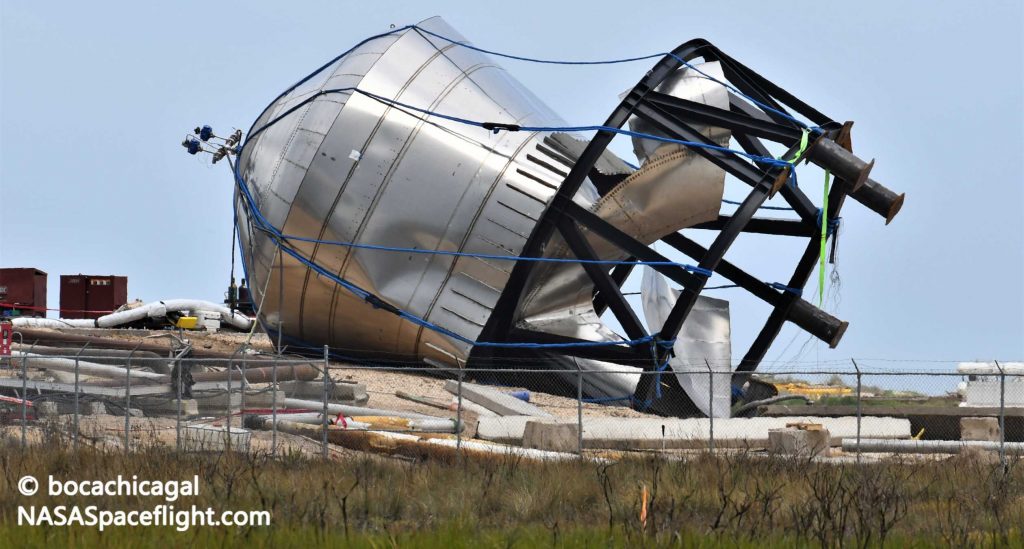
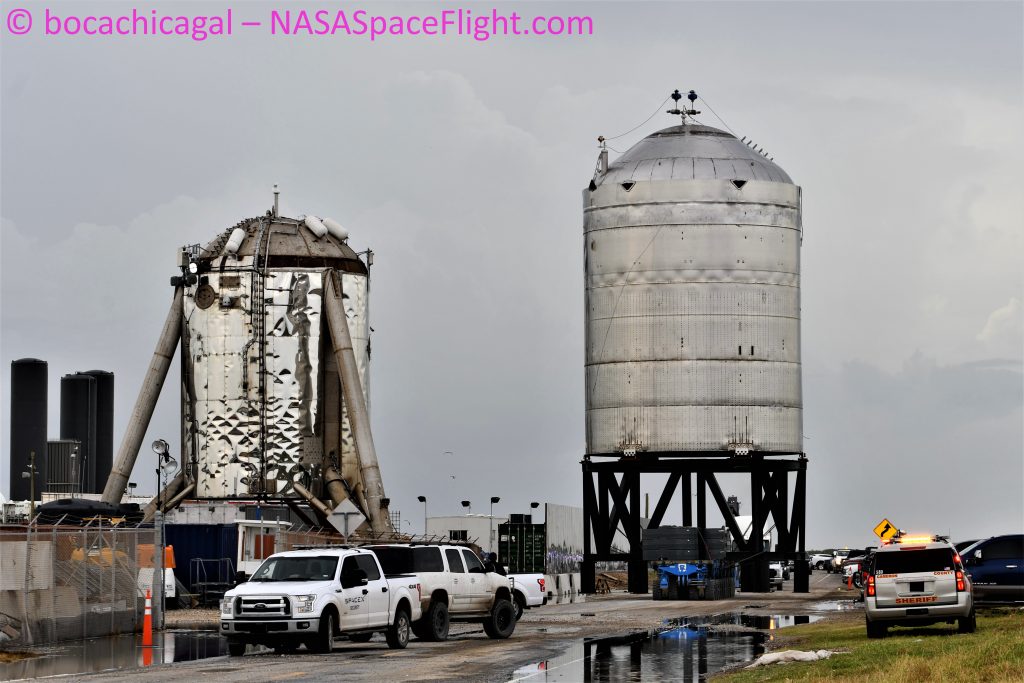
Given that SN7 performed quite well, it’s at least a bit less surprising that SpaceX is hinging months of work and at least four full-scale Starship prototypes on an otherwise unproven steel alloy. The next big test for 304L Starships will be a second test tank known as SN7.1. Rolled to the test site on September 7th, essentially as soon as Starship SN6 was safed and returned to the factory after its hop debut, SN7.1 is significantly more complex than its sibling and will test a ~304L Raptor mount (thrust puck) and skirt section. The forces and general conditions those new parts will be subjected to are substantially different than most of what SN7 was subjected to, meaning that there is a chance that 304L steel is less optimal in different scenarios.
With any luck, SN7.1’s test campaign – scheduled to begin as early as 9pm CDT (UTC-5), September 10th (today) – will be a flawless success, proving that SpaceX’s new steel alloy is universally superior to 301 for Starship-related applications. If that’s the case, Starship SN8 – the first full new-alloy prototype – will likely be fully outfitted with a nosecone and header tanks before beginning acceptance testing.
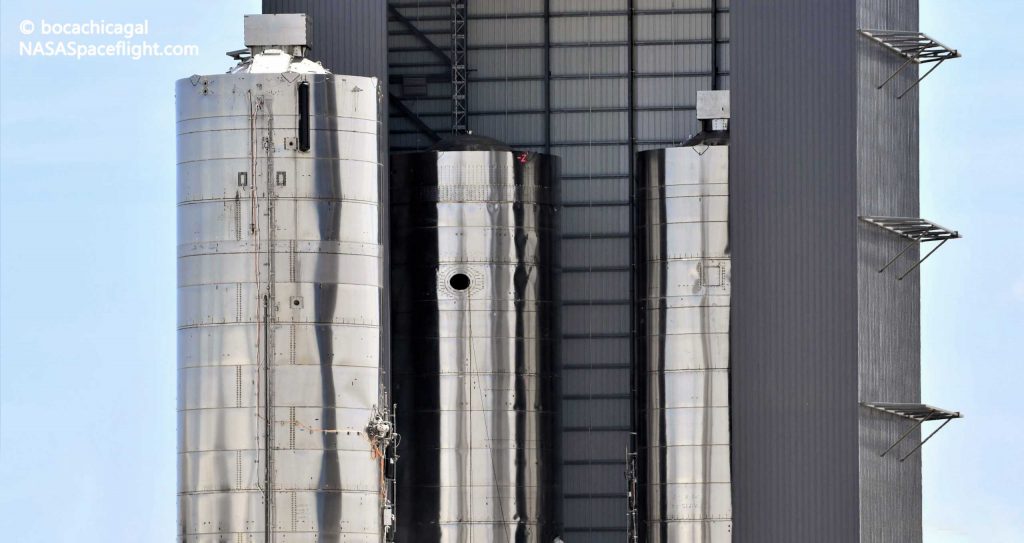
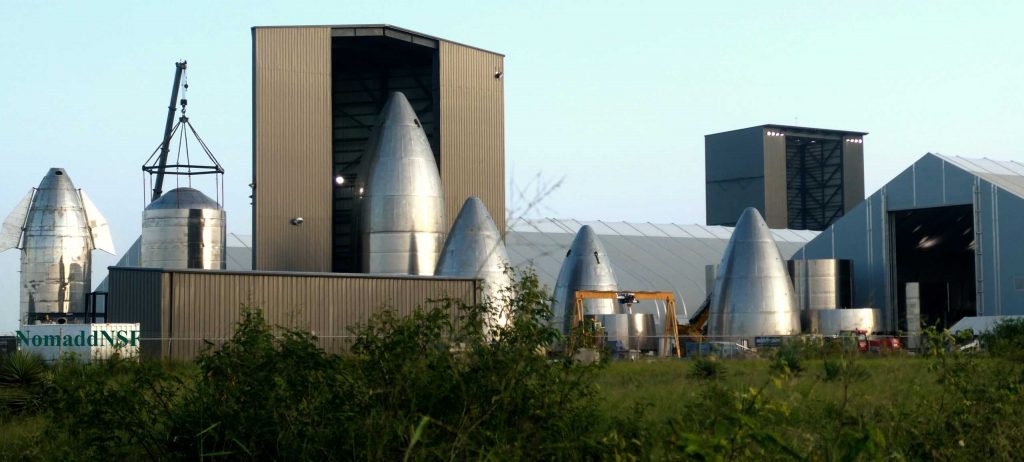
Eventually, if SN7.1 aces its tests and SN8 performs well during preflight preparations, Starship SN8 could become the first prototype to launch with a full nose, header tanks, and flaps, as well as the first to fly with three Raptor engines. If Starship SN8 fails for any reason or is damaged during testing, though, it appears that SpaceX will have no shortage of ships built out of the same new steel alloy to choose from.
In just the last ten days, labeled parts and rings for Starships SN9, SN10, and SN11 have all been spotted, implying that SpaceX is concurrently building at least four new Starships. Notably, both Starships SN9 and SN11 already appear to have some of the studs needed for heat shield tile installation affixed to sections of their steel hulls. Based on the sheer number of steel ring stacks spotted over the last week, it’s also safe to assume that SN9’s tank section (and possibly SN10’s, too) is largely prefabricated.
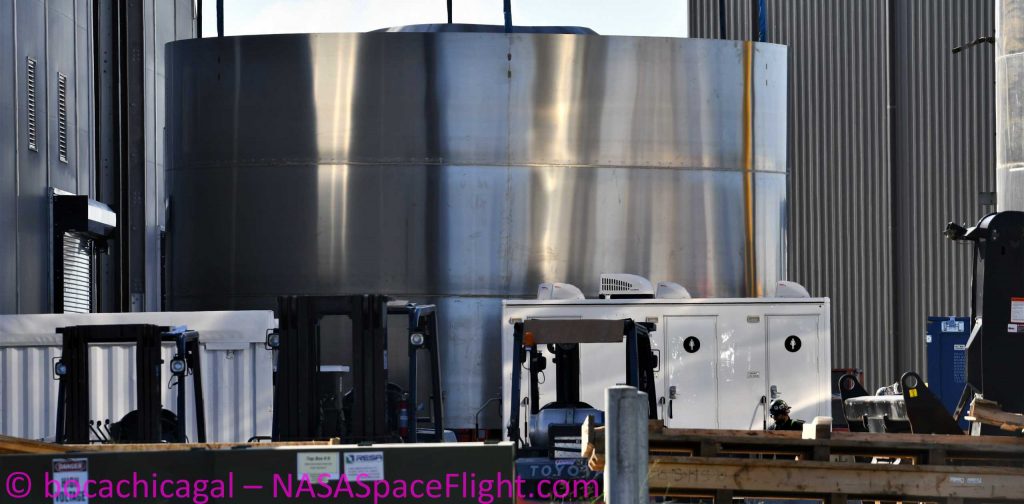
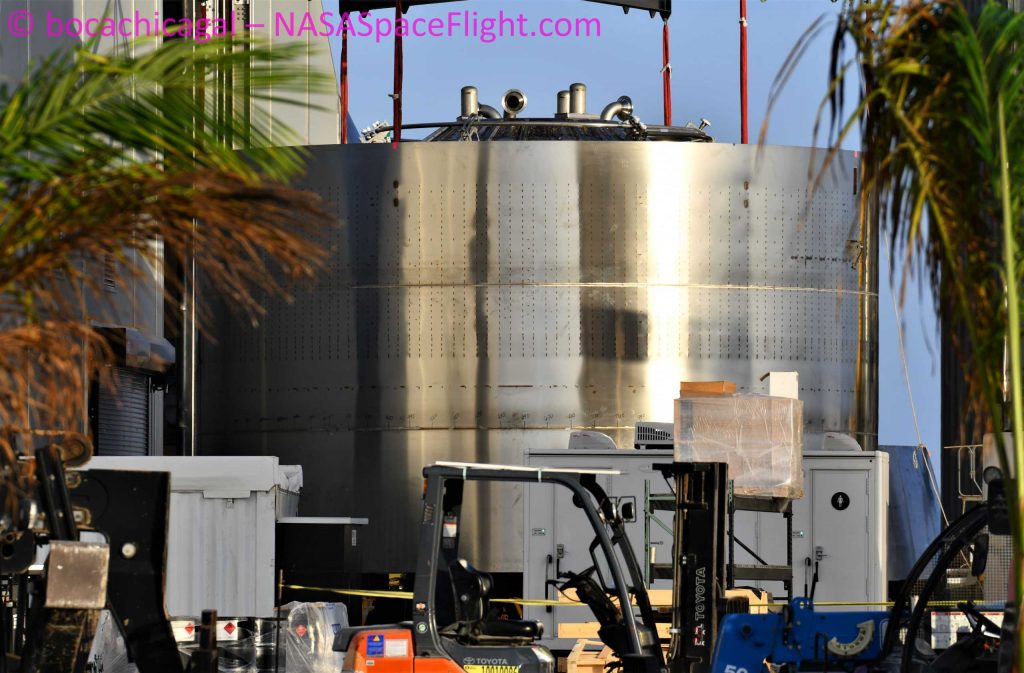
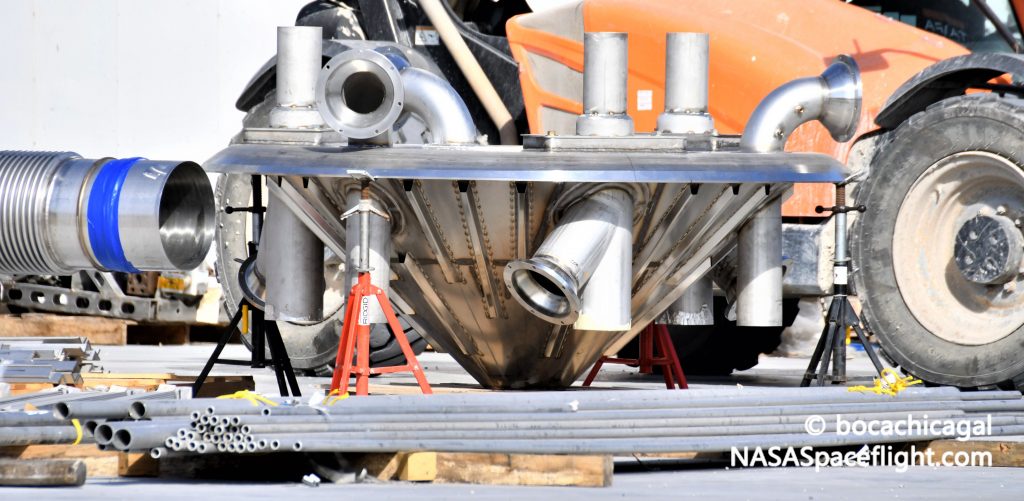
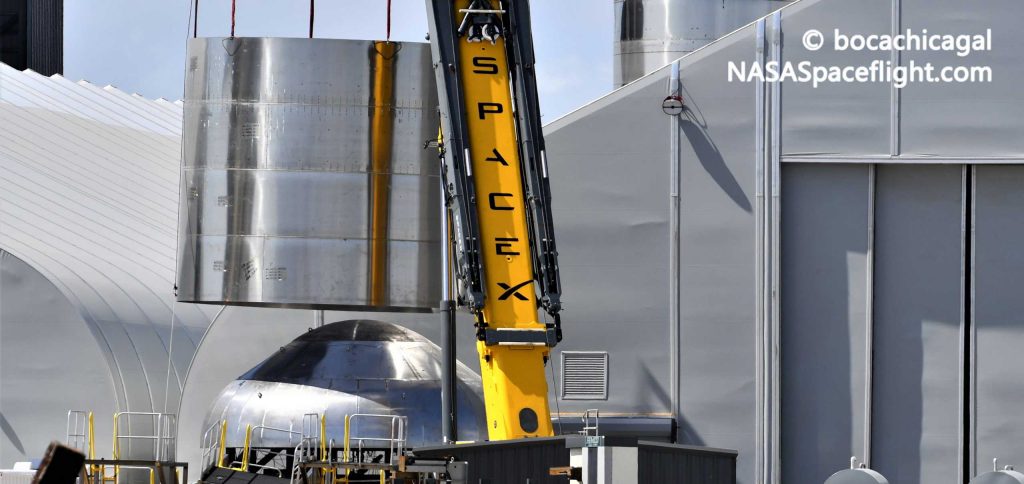
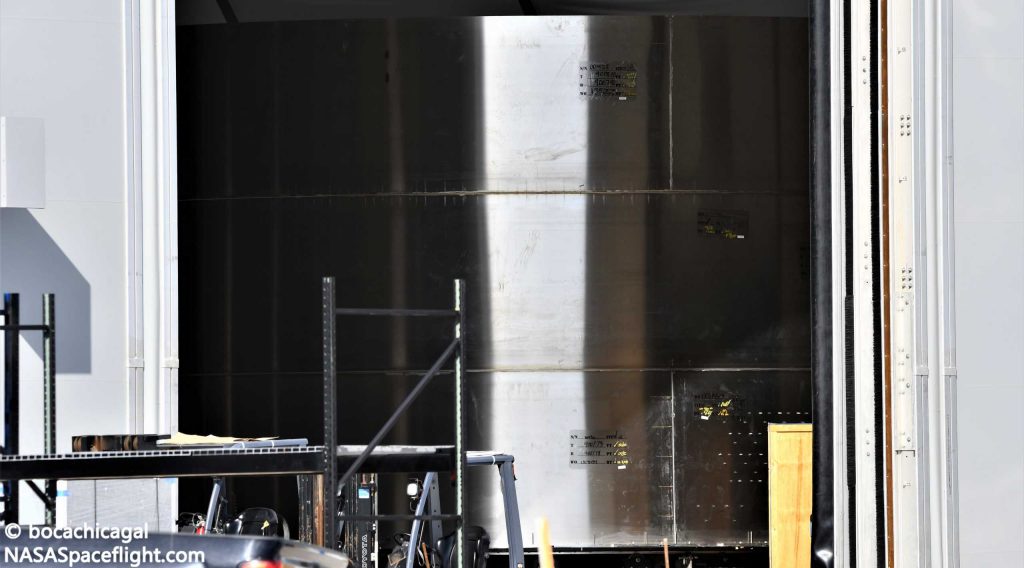

Assuming two of the in-work nosecones are ultimately meant for flight, SpaceX may already have enough hardware on hand to fully assemble two Starships (presumably SN8 and SN9) – including nosecones, header tanks, nose rings, and flaps. It’s safe to say that if SN7.1 achieves its goals, preparations for the first triple Raptor hop, 20 km (~12 mi) test flight, and skydiver-style landing attempt could come together incredibly quickly.
Check out Teslarati’s Marketplace! We offer Tesla accessories, including for the Tesla Cybertruck and Tesla Model 3.

News
Elon Musk’s Grokipedia surges to 5.6M articles, almost 79% of English Wikipedia
The explosive growth marks a major milestone for the AI-powered online encyclopedia, which was launched by Elon Musk’s xAI just months ago.

Elon Musk’s Grokipedia has grown to an impressive 5,615,201 articles as of today, closing in on 79% of the English Wikipedia’s current total of 7,119,376 articles.
The explosive growth marks a major milestone for the AI-powered online encyclopedia, which was launched by Elon Musk’s xAI just months ago. Needless to say, it would only be a matter of time before Grokipedia exceeds English Wikipedia in sheer volume.
Grokipedia’s rapid growth
xAI’s vision for Grokipedia emphasizes neutrality, while Grok’s reasoning capabilities allow for fast drafting and fact-checking. When Elon Musk announced the initiative in late September 2025, he noted that Grokipedia would be an improvement to Wikipedia because it would be designed to avoid bias.
At the time, Musk noted that Grokipedia “is a necessary step towards the xAI goal of understanding the Universe.”
Grokipedia was launched in late October, and while xAI was careful to list it only as Version 0.1 at the time, the online encyclopedia immediately earned praise. Wikipedia co-founder Larry Sanger highlighted the project’s innovative approach, noting how it leverages AI to fill knowledge gaps and enable rapid updates. Netizens also observed how Grokipedia tends to present articles in a more objective manner compared to Wikipedia, which is edited by humans.
Elon Musk’s ambitious plans
With 5,615,201 total articles, Grokipedia has now grown to almost 79% of English Wikipedia’s article base. This is incredibly quick, though Grokipedia remains text-only for now. xAI, for its part, has now updated the online encyclopedia’s iteration to v0.2.
Elon Musk has shared bold ideas for Grokipedia, including sending a record of the entire knowledge base to space as part of xAI’s mission to preserve and expand human understanding. At some point, Musk stated that Grokipedia will be renamed to Encyclopedia Galactica, and it will be sent to the cosmos.
“When Grokipedia is good enough (long way to go), we will change the name to Encyclopedia Galactica. It will be an open source distillation of all knowledge, including audio, images and video. Join xAI to help build the sci-fi version of the Library of Alexandria!” Musk wrote, adding in a later post that “Copies will be etched in stone and sent to the Moon, Mars and beyond. This time, it will not be lost.”
News
Tesla Model 3 becomes Netherlands’ best-selling used EV in 2025
More than one in ten second-hand electric cars sold in the country last year was a Tesla Model 3.

The Tesla Model 3 became the most popular used electric car in the Netherlands in 2025, cementing its dominance well beyond the country’s new-car market.
After years at the top of Dutch EV sales charts, the Model 3 now leads the country’s second-hand EV market by a wide margin, as record used-car purchases pushed electric vehicles further into the mainstream.
Model 3 takes a commanding lead
The Netherlands recorded more than 2.1 million used car sales last year, the highest level on record. Of those, roughly 4.8%, or about 102,000 vehicles, were electric. Within that growing segment, the Tesla Model 3 stood far ahead of its competitors.
In 2025 alone, 11,338 used Model 3s changed hands, giving the car an 11.1% share of the country’s entire used EV market. That means more than one in ten second-hand electric cars sold in the country last year was a Tesla Model 3, Auto Week Netherlands reported. The scale of its lead is striking: the gap between the Model 3 and the second-place finisher, the Volkswagen ID3, is more than 6,700 vehicles.
Rivals trail as residual values shape rankings
The Volkswagen ID.3 ranked a distant second, with 4,595 used units sold and a 4.5% market share. Close behind was the Audi e-tron, which placed third with 4,236 registrations. As noted by Auto Week Netherlands, relatively low residual values likely boosted the e-tron’s appeal in the used market, despite its higher original price.
Other strong performers included the Kia Niro, the Tesla Model Y, and the Hyundai Kona, highlighting continued demand for compact and midsize electric vehicles with proven range and reliability. No other model, however, came close to matching the Model 3’s scale or market presence.
News
Tesla Model Y Standard Long Range RWD launches in Europe
The update was announced by Tesla Europe & Middle East in a post on its official social media account on X.

Tesla has expanded the Model Y lineup in Europe with the introduction of the Standard Long Range RWD variant, which offers an impressive 657 km of WLTP range.
The update was announced by Tesla Europe & Middle East in a post on its official social media account on X.
Model Y Standard Long Range RWD Details
Tesla Europe & Middle East highlighted some of the Model Y Standard Long Range RWD’s most notable specs, from its 657 km of WLTP range to its 2,118 liters of cargo volume. More importantly, Tesla also noted that the newly released variant only consumes 12.7 kWh per 100 km, making it the most efficient Model Y to date.
The Model Y Standard provides a lower entry point for consumers who wish to enter the Tesla ecosystem at the lowest possible price. While the Model 3 Standard is still more affordable, some consumers might prefer the Model Y Standard due to its larger size and crossover form factor. The fact that the Model Y Standard is equipped with Tesla’s AI4 computer also makes it ready for FSD’s eventual rollout to the region.
Top Gear’s Model Y Standard review
Top Gear‘s recent review of the Tesla Model Y Standard highlighted some of the vehicle’s most notable features, such as its impressive real-world range, stellar infotainment system, and spacious interior. As per the publication, the Model Y Standard still retains a lot of what makes Tesla’s vehicles well-rounded, even if it’s been equipped with a simplified interior.
Top Gear compared the Model Y Standard to its rivals in the same segment. “The introduction of the Standard trim brings the Model Y in line with the entry price of most of its closest competition. In fact, it’s actually cheaper than a Peugeot e-3008 and costs £5k less than an entry-level Audi Q4 e-tron. It also makes the Ford Mustang Mach-E look a little short with its higher entry price and worse range,” the publication wrote.








